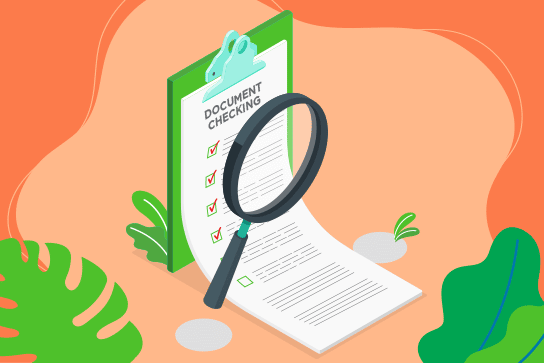LISTEN AUDIO
Last Updated on April 7, 2023 by Ozlinks Education
Subject Plan and cost basic menus.
This unit code SITHKOP002 describes the performance outcomes, skills and knowledge required to plan and cost basic menus for dishes or food product ranges for any type of cuisine or food service style. It requires the ability to identify customer preferences, plan menus to meet customer and business needs, cost menus and evaluate their success.
It does not cover the specialist skills used by senior catering managers and chefs to design and cost complex menus after researching market preferences and trends. Those skills are covered in SITHKOP007 Design and cost menus.
The unit applies to hospitality and catering organisations. Menus can be for ongoing food service, for an event or function, or for a food product range such as patisserie products.
It applies to cooks, patissiers and catering personnel who usually work under the guidance of more senior chefs.
Elements and Performance Criteria.
Elements describe the essential outcomes. Performance criteria describe the performance needed to demonstrate achievement of the element.
1. Identify customer preferences.
1.1 Identify current customer profile for the food business.
1.2 Analyse food preferences of customer base.
2. Plan menus.
2.1 Generate a range of ideas for menus for dishes or food production ranges, assess their merits, and discuss with relevant personnel.
2.2 Choose menu items to meet customer preferences.
2.3 Identify organisational service style and cuisine, and develop suitable menus.
2.4 Include balanced variety of dishes or food production items for the style of service and cuisine.
3. Cost menus.
3.1 Itemise proposed components of included dishes or food production items.
3.2 Calculate portion yields and costs from raw ingredients.
3.3 Assess cost-effectiveness of proposed dishes or food production items and choose menu items that provide high yield.
3.4 Price menu items to ensure maximum profitability.
4. Write menu content.
4.1 Write menus using words that appeal to customer base and fit with the business service style.
4.2 Use correct names for style of cuisine.
4.3 Use descriptive writing to promote sale of menu items.
5. Evaluate menu success.
5.1 Seek ongoing feedback from customers and others, and use to improve menu performance.
5.2 Assess success of menus against customer satisfaction and sales data.
5.3 Adjust menus based on feedback and profitability.
Assessment Requirements.
Performance Evidence.
Evidence of the ability to complete tasks outlined in elements and performance criteria of this unit in the context of the job role, and:
- identify and evaluate the food preferences of customer groups with differing characteristics and use to inform menu planning
- develop and cost each of the following menu types based on above information:
- à la carte
- buffet
- cyclical
- degustation
- ethnic
- set
- table d’hôte
- seasonal
- evaluate success of the above menus by obtaining at least two of the following types of feedback:
- customer satisfaction discussions with: customers, employees during the course of each business day
- customer surveys
- improvements suggested by: customers, managers, peers, staff, supervisors, suppliers
- regular staff meetings that involve menu discussions
- seeking staff suggestions for menu items
- develop the above menus within commercial time constraints, demonstrating:
- use of balanced variety of dishes and ingredients.
- methods for determining costs of supply for ingredients.
- methods and formulas for calculating portion yields and costs from raw ingredients.
- methods for responding to feedback and adjusting menus.
- methods for achieving desired profit margins, mark-up procedures and rates.
- use of different types and styles of menus for dishes or food production ranges.
Knowledge Evidence
Demonstrated knowledge required to complete the tasks outlined in elements and performance criteria of this unit:
- organisation-specific information:
- sources of information on current customer profile and food preferences
- service style and cuisine
- costs of supply for ingredients
- methods and formulas for calculating portion yields and costs from raw ingredients:
- butcher’s test
- standard measures
- standard yield tests
- hospitality and catering industry desired profit margins, mark-up procedures and rates
- different types and styles of menus for dishes or food production ranges for different types of food outlets
- range of food preferences relating to:
- contemporary eating habits
- cultural and ethnic influences
- popular menu items
- quick service foods
- seasonal dishes
- variety of food products
- differing characteristics of customer groups:
- age range
- buying power
- gender
- income level
- social and cultural background
- influence of seasonal products and commodities on menu content.
- naming conventions and culinary terms for a variety of cuisines.
- formats for and inclusion of menus presented to customers.
- methods of assessing the popularity of menu items:
- customer surveys
- popularity index
- sales data.
Assessment Requirements.
Assessment for this subject will be covered the following areas:
- commercial information:
- preferred supplier arrangements
- purchase specifications
- sources of negotiated cost of supply: tariffs, price lists.
- product information:
- food preparation lists
- menus for restaurants
- price lists
- recipes
- costs of food supply for food service businesses
- menus for the variety of cuisines and service styles specified in the performance evidence.



